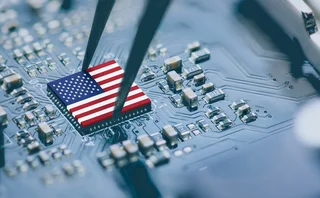
Nordea: Licensing changes could make RPA too expensive
The Nordic bank is looking for ways to mitigate costs as software vendors define new policy categories to capture robotic workers.
Robotic workers—aka, robotic process automation, or RPA—automate tedious and repetitive tasks at banks, but an executive at Nordea says the indirect costs of licensing bots for interactions with third-party software could outweigh the efficiencies they bring.
Agnieszka Belowska-Goslawska, head of the Robotics Center of Excellence at Nordea, says that software providers now treat digital employees as a separate category to human workers in their policies. She says she started noticing the trend in early 2020, when some of these vendors, which she declined to name publicly, told the bank they were rethinking their licensing models.
“They want to have a different licensing model [for RPA], which makes the business case much worse,” Belowska-Goslawska says. The Nordic bank deploys over 550 bot workers in a range of activities in anti-money laundering operations, client-facing services, and back-end processes.
Last year, the bank moved from two vendors to a large, international provider of robotic tech after the companies changed their licensing terms, effectively increasing fees. One of the companies, a niche player in the space, used to charge per user of the software, but introduced new definitions that distinguish digital users from human users. The cost of moving to the new provider was still large, Belowska-Goslawska says, but Nordea believes it will be worthwhile in the long run.
“We said, ‘OK, the cost of rebuilding is still high, but if you look into long-term business case, it’s much better to rebuild those robots and use other solutions to save money,’” she says.
As an example of how providers are changing their fee structures, Microsoft announced a new license option last year for Office applications to support “unattended” scenarios—situations where bots are running automation without collaboration of a human (though it adds that these apps have not been designed for unattended usage at scale). The company says in its Microsoft 365 license overview from May 2020 that if an “RPA solution interacts with Windows or Office, then you will need a license. There is no such thing as ‘unlicensed access’ for RPA solutions.” Microsoft declined to comment further on its announcement.
Belowska-Goslawska says such changes to licensing models could “kill or devastate the automation journey,” though she adds that Nordea is still pursuing automation. One company that Nordea did mention as a partner for its bot applications is Blue Prism. Belowska-Goslawska says these new licenses add to the overall cost of using RPA, even if Blue Prism itself doesn’t raise its prices.
“If you think about the total business case for robotics, you should not only consider the Blue Prism costs: if there are any other costs attached to digital employees, you need to look into those [and examine] what you are doing. I don’t think many people do it, because often other licenses or software are handled separately. But for us, we are looking into that for the whole business case,” she says.
End-user firms are of course free to move to cheaper solutions, as Nordea did, but she adds that the expense and difficulty of migrating to another supplier can be a deterrent.
“When [our previous vendor] decided to put a super expensive license on the bots, we were looking for alternative solutions,” she says. “I think we found one where it’s much cheaper. But of course, there is a huge cost and burden to reveal those robots to the new infrastructure. So it’s always an arbitrage [around] what’s the right solution you have to take, plus there are multiple upgrades of the systems you have to take for your robots to get the service and stability you require.”
Justified expense
Ian Stevens, a partner at law firm CMS, says the sophistication of RPA technology, the variety of tools and applications it can interface with, and the uses to which it can be put are rapidly evolving, as a robot can work 24 hours a day and perform tasks many times faster than a human ever could.
“So unless the vendor adapts its licensing model, it stands to lose revenue. Where once it may have sold multiple user licenses, now it may only sell one, used by a nominally human-supervised robot. So vendors are now developing new licensing models and pricing aligned to how customers deploy and use their products,” he says.
As firms adopt more automation, their use of software is evolving, and traditional licensing models don’t necessarily reflect the increased productivity and value customers can get from the use of their software anymore. It might, seen in that light, be justifiable to license a robot’s 24/7 use of a solution at a higher price than a human’s use during normal business hours, he adds.
However, he says, where “deployment is on-premise, the argument for differential pricing based on the customer’s deployment model may not be as strong—but can still be argued,” he says. “The position is likely to be different where the license fee is calculated by reference to transaction activity or other volume-based metrics, as the benefit the customer gets from higher intensity use of a single installation is likely to be reflected in an increased price payable to the vendor,” he says.
Stevens believes it’s good business practice for RPA vendors to warn their clients when marketing their services that additional charges could be incurred down the line when the RPA interacts with third parties’ software.
“Pricing and licensing models need to reflect the manner in which the software will be deployed and used, and customers need to be made aware of any differential pricing that will apply for automated use. Vendors will want to be able to audit that usage to check the correct license fee is being paid,” he says.
Legal precedent
Legal experts say that a case decided in the High Court in London made users aware of how RPA and other types of “indirect access” to software could represent hidden costs. In 2017, the court ruled on a dispute between software giant SAP and Diageo, the multinational beverage company that produces Guinness.
Diageo had been using the mySAP suite of solutions, under SAP’s “named users” license. After a couple of years, Diageo integrated the SAP suite with software from SAP competitor Salesforce. Diageo salespeople and customers would use the Salesforce apps to access the SAP data store. SAP said these users required another license, and it was therefore owed fees of £55 million.
The court ruled in SAP’s favor. In its updated licensing guide, published the year after the ruling, SAP stated that how customers consume its software has undergone dramatic changes. “Not only are the employees of SAP’s customers using our digital core … but their business partners, consumers, third-party applications, IoT (Internet of Things) devices, automated systems and robotic process automation, or bots, are also using the digital core,” the documentation says.
In the guide, SAP outlines its “indirect access” policies. The “named user” construct was no longer relevant, it implies, and SAP’s new pricing approach differentiates between direct human access, charged for on a per-user basis, and indirect digital access, where “pricing is based on the number of transactions, called documents, processed within the digital core.”
Further reading
Only users who have a paid subscription or are part of a corporate subscription are able to print or copy content.
To access these options, along with all other subscription benefits, please contact info@waterstechnology.com or view our subscription options here: http://subscriptions.waterstechnology.com/subscribe
You are currently unable to print this content. Please contact info@waterstechnology.com to find out more.
You are currently unable to copy this content. Please contact info@waterstechnology.com to find out more.
Copyright Infopro Digital Limited. All rights reserved.
As outlined in our terms and conditions, https://www.infopro-digital.com/terms-and-conditions/subscriptions/ (point 2.4), printing is limited to a single copy.
If you would like to purchase additional rights please email info@waterstechnology.com
Copyright Infopro Digital Limited. All rights reserved.
You may share this content using our article tools. As outlined in our terms and conditions, https://www.infopro-digital.com/terms-and-conditions/subscriptions/ (clause 2.4), an Authorised User may only make one copy of the materials for their own personal use. You must also comply with the restrictions in clause 2.5.
If you would like to purchase additional rights please email info@waterstechnology.com
More on Emerging Technologies
This Week: Startup Skyfire launches payment network for AI agents; State Street; SteelEye and more
A summary of the latest financial technology news.
Waters Wavelength Podcast: Standard Chartered’s Brian O’Neill
Brian O’Neill from Standard Chartered joins the podcast to discuss cloud strategy, costs, and resiliency.
SS&C builds data mesh to unite acquired platforms
The vendor is using GenAI and APIs as part of the ongoing project.
Chevron’s absence leaves questions for elusive AI regulation in US
The US Supreme Court’s decision to overturn the Chevron deference presents unique considerations for potential AI rules.
Reading the bones: Citi, BNY, Morgan Stanley invest in AI, alt data, & private markets
Investment arms at large US banks are taken with emerging technologies such as generative AI, alternative and unstructured data, and private markets as they look to partner with, acquire, and invest in leading startups.
Startup helps buy-side firms retain ‘control’ over analytics
ExeQution Analytics provides a structured and flexible analytics framework based on the q programming language that can be integrated with kdb+ platforms.
The IMD Wrap: With Bloomberg’s headset app, you’ll never look at data the same way again
Max recently wrote about new developments being added to Bloomberg Pro for Vision. Today he gives a more personal perspective on the new technology.
LSEG unveils Workspace Teams, other products of Microsoft deal
The exchange revealed new developments in the ongoing Workspace/Teams collaboration as it works with Big Tech to improve trader workflows.







